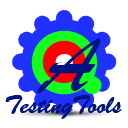Under waterfall and traditional development methods, testers would often have to write and execute tests by hand. Because some of the tests had to be performed multiple times, this placed a lot of responsibility on quality assurance teams to ensure that they were run, leaving little time for other testing activities. In these environments, testers were largely on their own when it came to evaluating software, and they usually ran into schedule conflicts, making it hard to thoroughly test everything.
Agile has changed everything about how testers work and what tasks they can expect in their daily workflows. Automation integration was a major asset as it ensured that the repetitive tests would be run without any manual interaction outside of scheduling and writing the test scripts. In this environment, disparate teams are also encouraged to work together and share knowledge to streamline operations and improve quality. The question then becomes who should be involved in test automation and what will their functions be?
Must have the skills to pay the bills
Automation is not an easy practice by any means. It involves a lot of hard work and dedication from a team to be run effectively. Individuals must understand how to work with automation tools as well as have knowledge related to programming. Software Testing Help noted that on top of this, an automation team must be easily adaptable to take advantage of new technologies and write capable tests. Without these skills, teams simply will not be able to identify the best scripts for automation or how to accelerate a project's time to market with this tool. The collaboration practices set by agile environments will make professional abilities a significant requirement for making automation a success.
Setting up your team
With an automated environment, you're likely to have a few roles that differ from how teams were set up in the past. According to TechBeacon contributor Lena Katz, there are three major positions that should be involved with automated testing. First, you'll need a DevTester, which is someone who writes and executes both manual and automation tests based around the user stories. A developer should also be involved to help the DevTester review the test design and code. The last member would be the QA architect, who identifies which tests are fit for automation and understands what cases will boost ROI in an automated environment. Having these three roles, at minimum, will help set automation efforts up for success and drive knowledge sharing among these individuals.
If your team finds that this setup doesn't work for them, there are a variety of other ways to delegate automation and manual testing tasks. In a whitepaper, software consulting company Mosaic Inc noted that positions can be broken down into individuals that are devoted to one particular area of the testing effort. Manual test engineer, for example, is responsible to designing and maintaining manual scripts. The lead automator has a hand in the automation architecture, design of automation across projects, knowledge transference and ongoing training. An automation test engineer is concerned with automation scripts and likely works with the manual engineer to transition some test cases. Lastly, the automation environment expert develops and maintains the test environment, ensuring that the automation software is up to date and that everyone understands automation testing best practices.
Ultimately, how you set up your automation testing team will depend on individual capabilities and what makes the most sense for your testing needs. Collaboration and the right tools will be essential to keeping everyone on the same page and ensuring that they can do their jobs effectively.

